|
McCloud River Lumber Company:
Falling and Bucking Trees |
|
|
|
Timber falling has always been one of the most dangerous occupations in the world. Fallers typically worked in pairs, both for safety and practical reasons. Fallers first
had to determine which direction a tree would fall, and using mostly axes the falling team would cut a notch in the tree facing that direction. The fallers would then typically use a two-man crosscut saw to cut
through the back side of the tree, and if necessary would pound steel wedges into the cut behind the saw to keep it from binding and to help push the tree over.
|
|
|
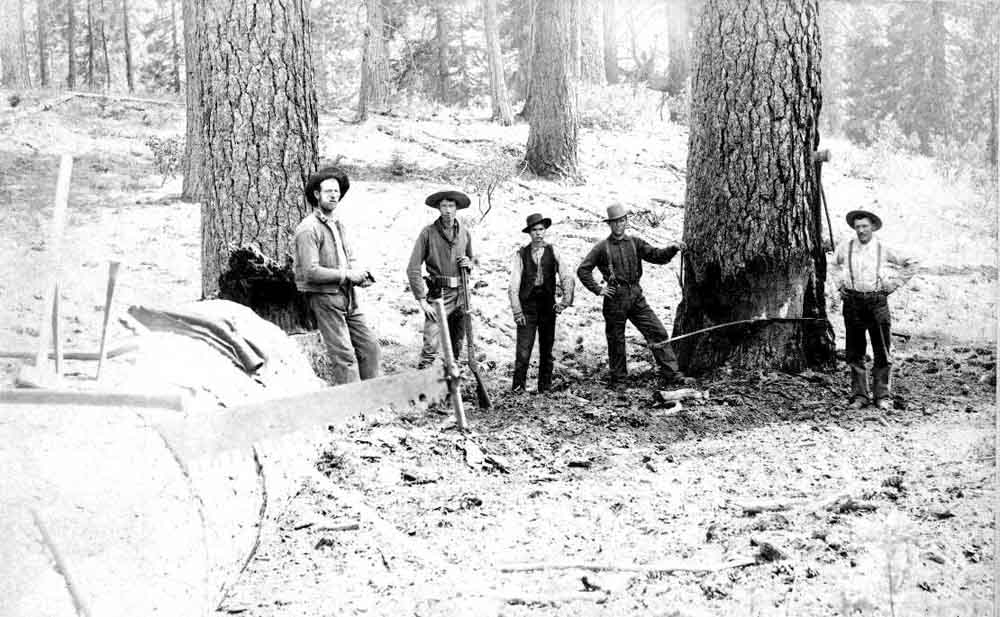 |
|
A typical very early falling crew at work. This is not of the McCloud River company, but is in the Mt. Shasta region. Kuhlman collection, courtesy Martin Morisette.
|
|
|
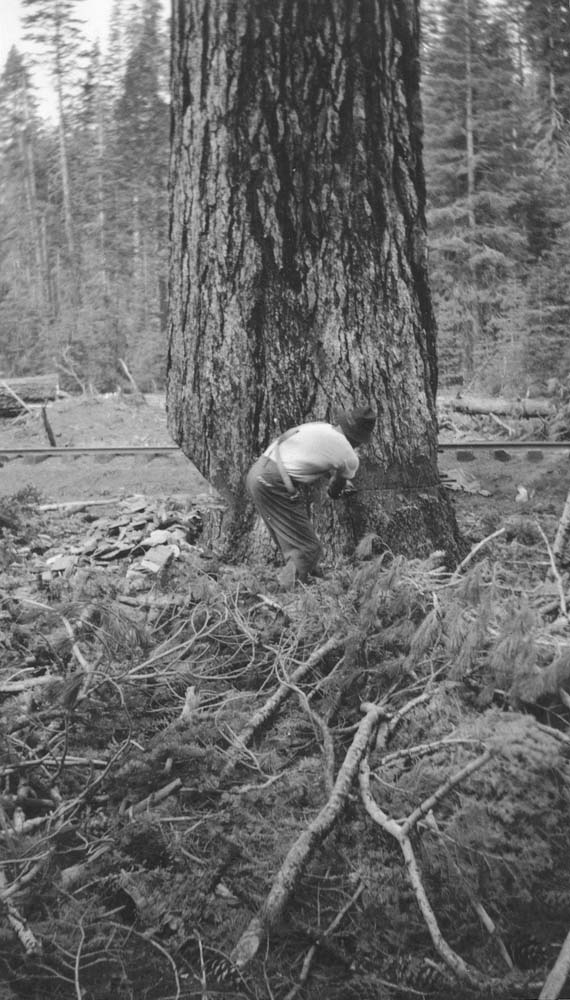 |
|
A falling team at work on a sugar pine tree. They have finished the face cut and are working with the crosscut saw. Scott Dowell collection.
|
|
|
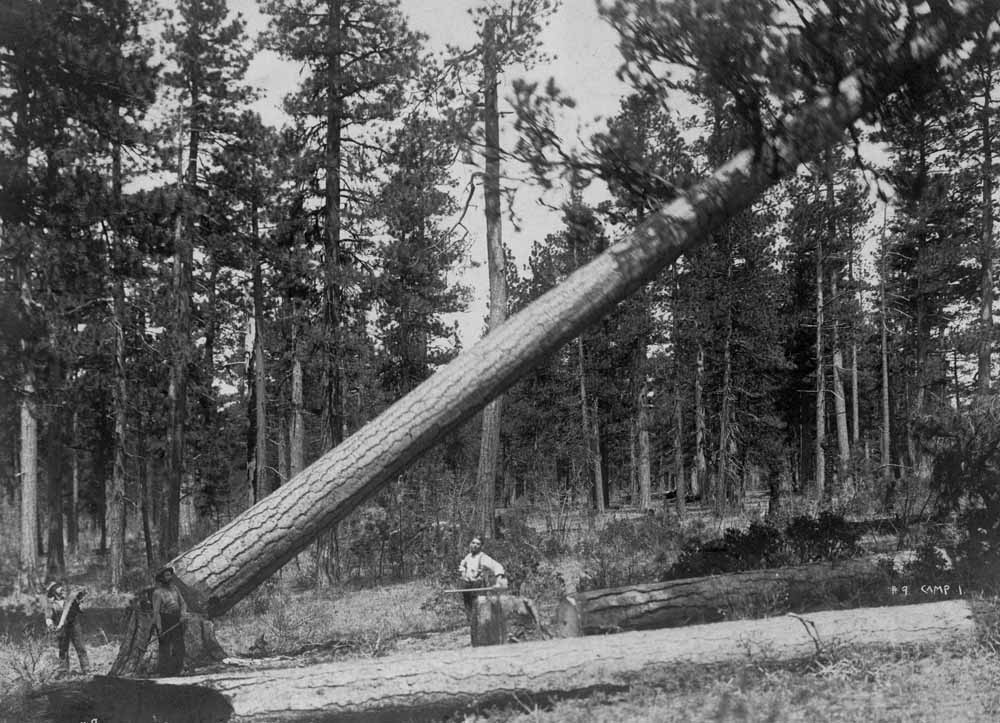 |
|
Three fallers watching a tree coming down. Jeff Moore collection.
|
|
|
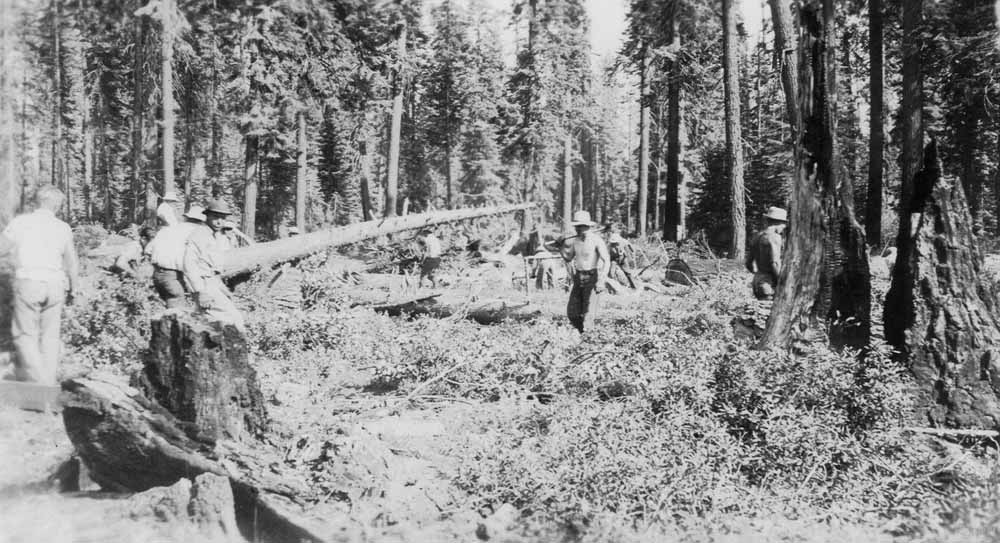 |
|
A group of timber fallers in the McCloud woods. Heritage Junction Museum.
|
|
|
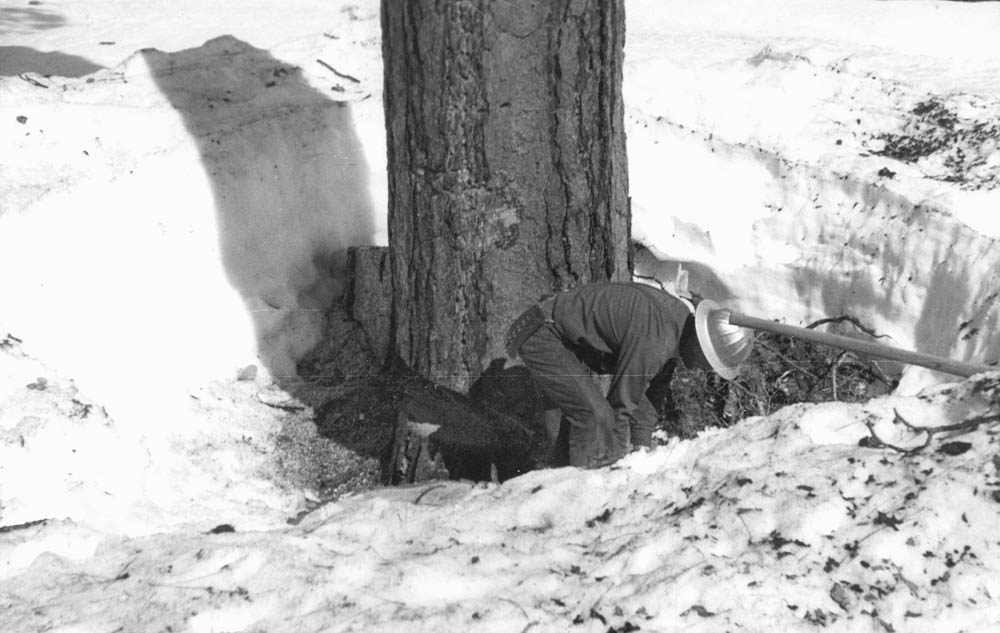 |
|
"Faller Jess" working near Pondosa in the winter of 1952. By this late date he was likely using a chain saw. Scott Dowell collection.
|
|
|
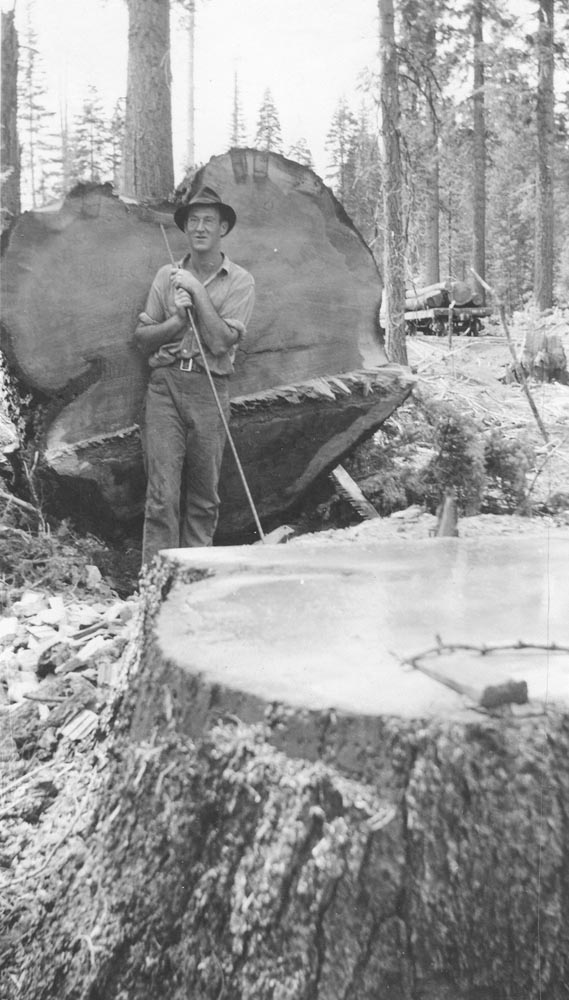 |
|
"Ted" next to a just fallen tree in the White Horse country in 1937; he is holding what appears to be a scaling stick. Note the wedge on the stump in the foreground. Scott Dowell collection.
|
|
|
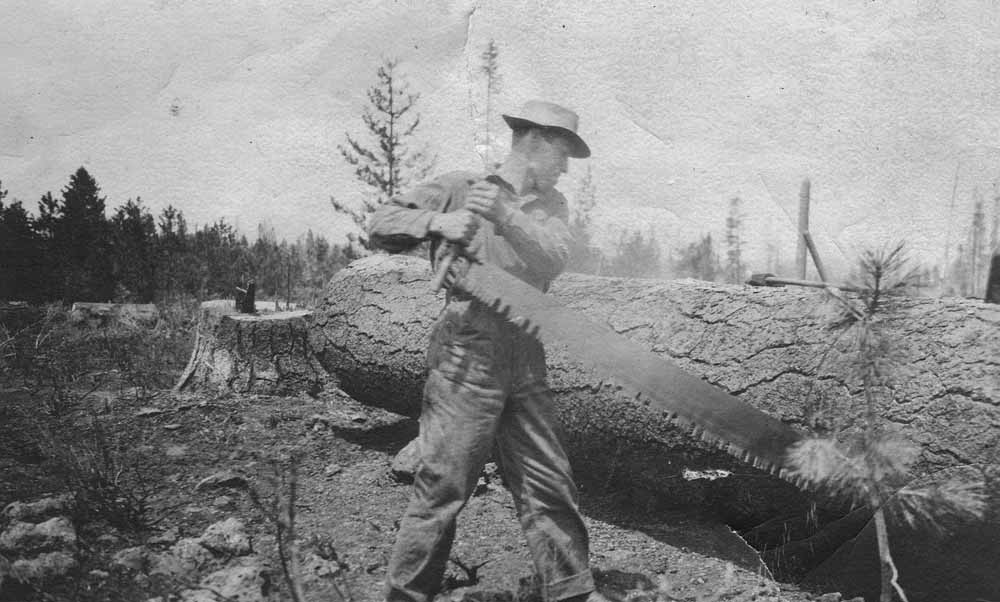 |
|
A bucker at work cutting a recently fallen tree into logs. Heritage Junction Museum.
|
|
|
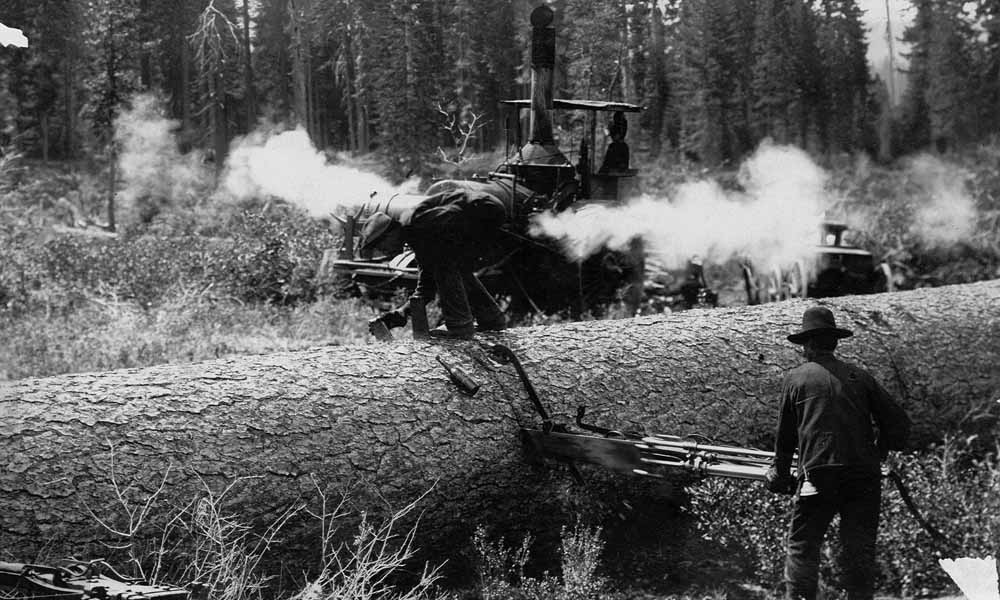 |
|
One of the apparently less successful experiments was using steam from a traction engine to power a bucking saw. The bottle on the trunk held lubricating oil for the saw, and the man
on top of the log is driving wedges into the cut to keep the saw from binding. Heritage Junction Museum.
|
|
|
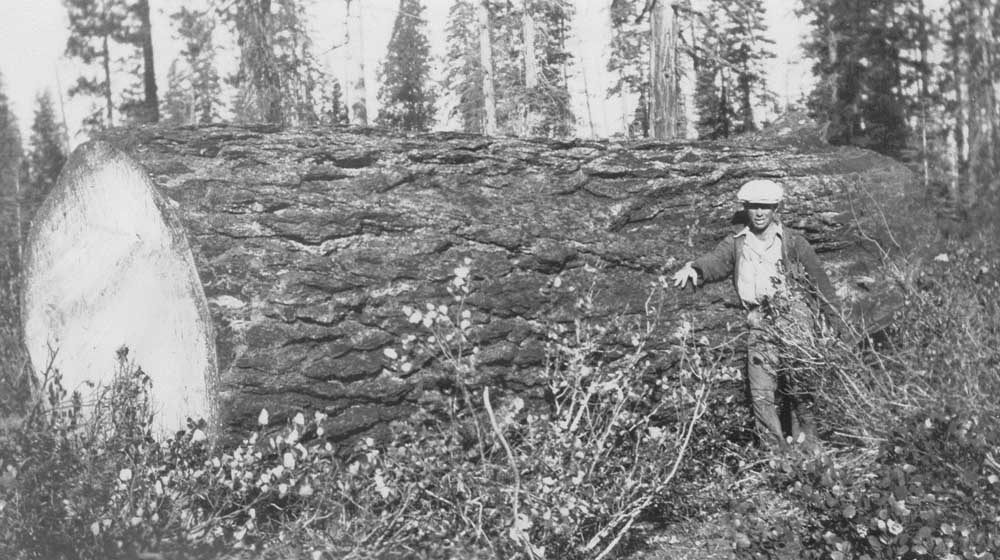 |
|
Don Sullivan standing next to a log ready for transport to the landing. Scott Dowell collection.
|
|
|
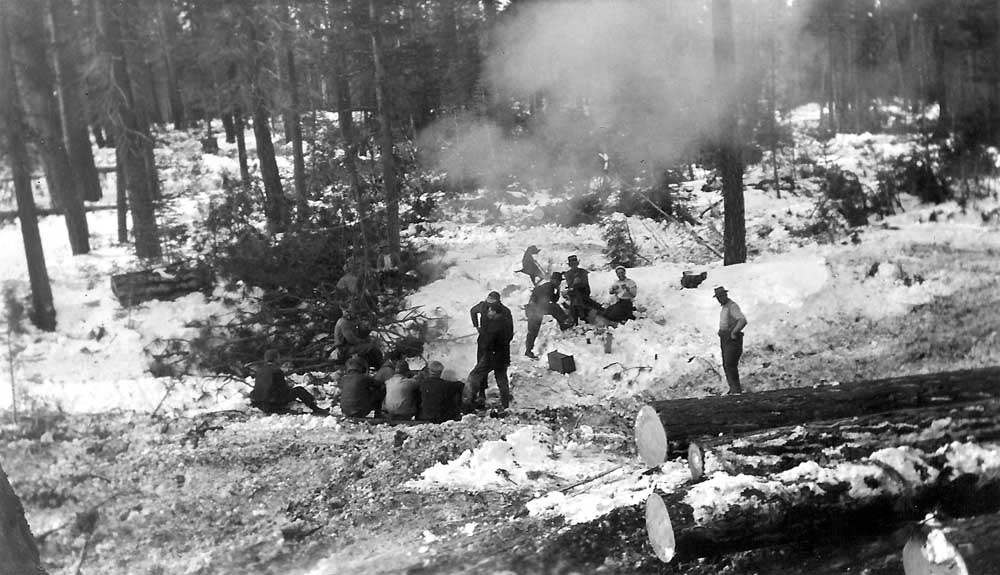 |
|
A group of loggers enjoying their noon meal in the White Horse country in 1934. Roland Edwards collection, courtesy Marilyn Rountree.
|
|
|